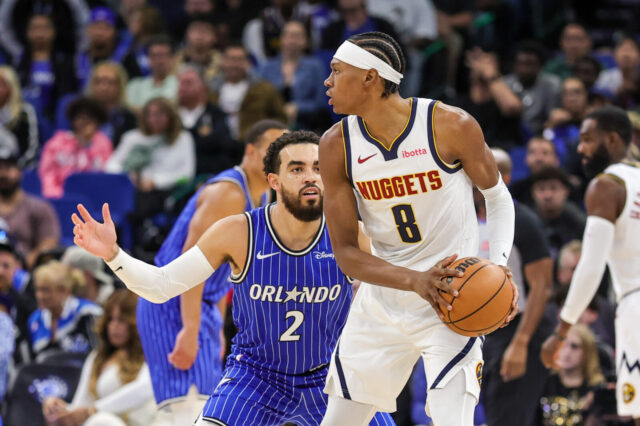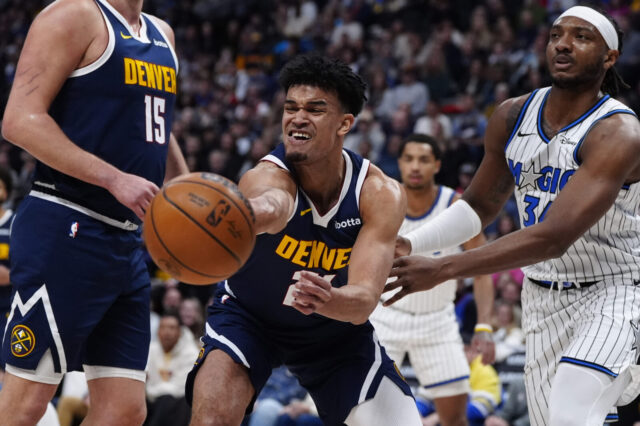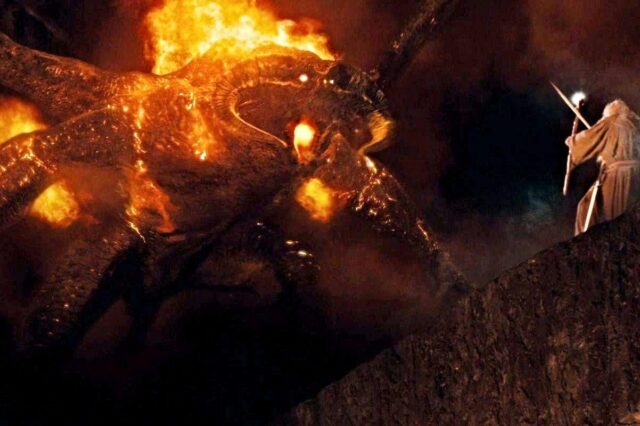Our Denver Nuggets appear to be caught in a perpetual conundrum.
Given that Denver is located 5,280 feet (approximately) above sea level, it's oh so tempting for a Nuggets head coach to play an up-tempo, speed-it-up, free flowing offense. Such an offense is ideal for racking up regular season wins – especially against road-weary opponents who might be playing the second of a back-to-back or a fourth game in five nights, thus preventing them from being able to acclimate to Denver's altitude.
And yet that same up-tempo style that makes the Nuggets so dangerous during the regular season has proven to be dangerous to themselves in the post-season, where the road team has ample rest, ample time to acclimate to altitude and the game slows down into a half court, more "traditional" style of basketball.
Hence the conundrum.
Ever since the Nuggets joined the NBA in 1976 as one of four ABA holdover franchises, the Nuggets have routinely been a supremely competitive regular season team. Over the past 37 years, the Nuggets have missed the playoffs just 13 times, are currently riding a 10 season playoff appearance streak, have won at least 50 regular season games eight times, have been among the NBA's top five in team scoring 20 times and have led the NBA in team scoring 10 times, including a remarkable five-season stretch from 1980 through 1985. This highlight pretty much sums up what that era was all about, by the way:
Doug Moe huddle (via nonplayerzealot4)
But despite all that regular season success, the Nuggets are the lone ABA holdover to have never appeared in an NBA Finals and the Nuggets have routinely been on the wrong end of playoff upsets, including 1977 when the favored, Larry Brown-coached Nuggets lost a second round playoff series to the Portland Trail Blazers, 1988 when the favored, Doug Moe-coached Nuggets lost another second round series (that time to the Dallas Mavericks), and this year – 2013 – when the heavily favored, George Karl-coached Nuggets lost a first round series to the Golden State Warriors. In defense of both the 1977 and 1988 Nuggets teams, the teams that “upset” them were only one win off in regular season record. Conversely, the 2012-13 Warriors had won 10 games less than the 2012-13 Nuggets, making that playoff loss a colossal disappointment … the effects of which are still being felt to this day.
Ironically, the one time the Nuggets were on the right end of a playoff upset was when they played more of a half court, “traditional” style of basketball versus a run-and-gun opponent. That would be, of course, the 1993-94 8th-seeded, 42-win Denver Nuggets (who have been terrifically memorialized by Denver Stiffs’ own Jeff Morton through a series of articles commemorating their 20th anniversary) who – despite finishing 19th in the NBA in scoring – bested the 1st-seeded, 63-win Seattle Supersonics who had finished 5th in scoring that season. And with perhaps another twinge of irony, that Sonics squad was coached by none other than Karl while that Nuggets squad was coached by Dan Issel, a former Nugget steeped in Nuggets lore who was a prime beneficiary of the Nuggets run-and-gun style from the mid-1970s through the mid-1980s. But to Issel’s eternal credit, he played a style that fit the roster he was given with lumbering big men like Dikembe Mutombo, Brian Williams and LaPhonso Ellis and average but not flashy swing players in Reggie Williams and Bryant Stith.
Other than the 1993-94 Cinderella team, the only other Nuggets team that played a more “traditional” style of basketball and found post-season success were the 2008-09 Nuggets, whom Jeff also recently wrote about. Like their 1993-94 predecessors, that team – coached by Karl – didn’t have the type of personnel that liked to run. Chauncey Billups and Dahntay Jones were hard-nosed defensive guards who were limited athletically, Carmelo Anthony preferred post-up jumpers to running and the Nuggets undersized big men Nene Hilario, Kenyon Martin and Chris Andersen would rather junk the game up defensively than get out and run. That team finished sixth in team scoring and sixth in pace, quite different from Karl’s other Nuggets teams, and it worked to the tune of a Western Conference Finals run that season.
But other than the 1993-94 Nuggets and the 2008-09 Nuggets, every experiment with “traditional” basketball has been a failure in the Mile High City. (And I’ll forever remember Coach Karl telling me: “Experiments get coaches fired” … which goes a long way to explain why Karl was always reticent to play JaVale McGee more minutes.)
A season removed from playing an insane up-tempo style in 1990-91, then head coach Paul Westhead switched to a half-court style with Mutombo anchoring the center position for the 1991-92 season, finished third from the bottom in team scoring and weren’t even bad enough with 24 wins to secure a better shot at a top two pick for the 1992 NBA Draft (otherwise known as the Shaquille O’Neal / Alonzo Mourning draft).
The slow-it-down, “deliberate” system was attempted again during Issel’s second tenure as head coach in the late 1990s and very early 00s. After one lockout-shortened season under Mike D’Antoni (who not surprisingly tried to pick up the pace), Issel took over the coaching reigns from 1999 through 2001 and the Nuggets saw their scoring and pace plummet with each season. Never taking advantage of Denver’s altitude, those Nuggets went from mediocre to downright awful in a matter of three years, forcing GM Kiki Vandeweghe to blow up the entire roster and tank the entire 2001 through 2003 seasons with Jeff Bzdelik as head coach. Bzdelik, a disciple of Pat Riley’s slow-it-down systems in Miami during the 1990s and knowing he had perhaps the worst assembled roster in NBA history, slowed the 2002-03 Nuggets to a grinding halt as that team finished last in team scoring and 15th in pace. But when Anthony and Andre Miller joined the franchise the following season, Bzdelik guided them to fifth in scoring and first in pace.
Could the current season – with the Nuggets sitting at a disappointing 1-4 despite weak opposition in four of their first five games – be yet another failed experiment in “slowing it down”? It could be given that Ty Lawson isn’t a half court point guard, Kenneth Faried isn’t a half court power forward and McGee isn’t a half court center. After all, isn’t it interesting that the only times the Nuggets have been competitive this season have been when Lawson and Faried are upping the tempo themselves? (Or are we a Wilson Chandler / Danilo Gallinari return away from righting a ship that seems to have veered dramatically off course, considering that the Nuggets small forward combo accounts for about 30 points per game? I’ll answer that question by Christmas.)
Looking back at the Nuggets history of playing slow versus playing fast, you have to view the debate through the lens of the rosters involved. Issel's 1993-94 Nuggets and Karl's 2008-09 Nuggets had great players on their respective rosters. Whereas Westhead's 1991-92 Nuggets, Issel's 1999 through 2001 Nuggets and Bzdelik's 2002-03 Nuggets had outright dreadful rosters (and we'll ignore Bernie Bickerstaff's 1995 through 1997 mess and Bill Hanzlik's dreadful 1997-98 team … not only did they have no style whatsoever but they had no players, either … I just try to pretend those seasons just never happened at all).
Perhaps the brilliance of Brown, Moe and Karl – unquestionably the three best coaches in franchise history – was that they were able to take average rosters and turn them into bona fide competitive regular season teams season after season after season by playing the up-tempo style that has become so beloved here in Denver. And one has to believe that with Karl at the helm this season, playing his style, the Nuggets would probably be sitting better than 1-4 through five games. But that wouldn't necessarily prepare them for the playoffs, which brings us back to the Nuggets perpetual conundrum:
Running works during the regular season, but it has never worked in the post-season.
But by not running, the Nuggets may not make the playoffs at all.


